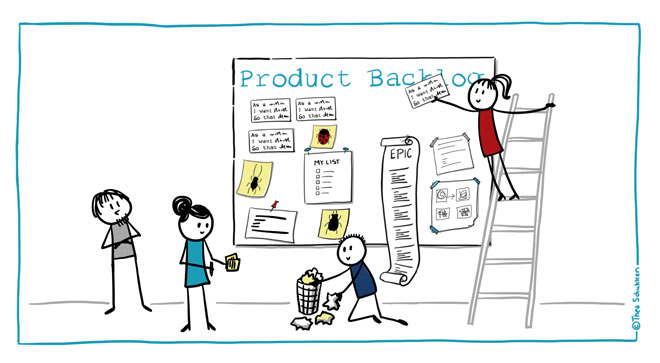
5 Great Tips To Maximize Productivity In Product Development
While working with or managing a product development team that is tasked with delivering functioning software, you need to ensure that the productivity of the team is not compromised at any moment. With changes in the situation, the teams must readjust to work efficiently.
In this article, we will deliver an outline for you to maximize productivity in your product development setup. Though there is a significant amount of content out there that gives you ways to improve productivity in general, there is none specifically written for product development.
There is no need for elaboration on why it is so essential to improving productivity. Everyone knows that getting a project to the finish line is an important factor to keep a business on track. If the team and working methods are not productive enough, then the quality of your task will not be as good, delays in deadlines, and you’ll miss a lot of opportunities too.
So before we get into the part where we talk about maximizing productivity, let’s first understand why it is so tough to measure productivity.
Measuring Productivity Is Challenging
Why are companies stressing so much about bringing productivity to their workplace? The only reason behind this is that it brings what they aim for, i.e., return on their investment (ROI). For example, if you’re investing some money, say $X, in your company, you’d obviously want twice or a certain target in return.
From a distance, it might look easy to apply strategies, but when you get into it, you understand how hard is it to be certain of the returns at the outset. You will find it very challenging to link a specific feature or bug fix with the revenue generated. It is because the generated revenue is for the whole project. Even measuring the actual cost and attributing revenue is not that easy. You can never say if you’ve got success because of strategic marketing or because of some perfectly implemented feature/design.
Though it is tough to measure productivity, it still is important to have an idea about it to improve as a product development team. So now that it’s clear that measuring productivity in financial terms is not possible, we have to look at some other factors that can help us determine it. Let’s talk about productivity on the smallest unit possible in product development.
Productivity On Elementary Level
In a product development setup, the smallest unit of production is an individual or a small team of engineers (a team that could be fed with only two pizzas). By looking at the smallest unit of production, we can easily determine the factors that drive productivity. For now, let’s just assume that this small team is working in isolation and is not part of a larger organization. We’ll then establish factors that’ll include the overall organization.
Factors affecting output with a single or a small team of engineers:
Prioritization
The features and specifications of the product that you’re going to deliver must create value for the customers. The more value you can provide with your product, the better will be the quality of output. Therefore, it is essential for engineers to first focus on the most valuable ones.
The use of a prioritization framework ensures that you silence the guessed decisions while sorting the features in order of priority and make a list based on quantitative rankings, charts, and matrices that are linked directly to your customer feedback. Moreover, it can help you create roadmap software to expedite the development process.
Marketing Time
This factor takes into account the speed at which the development moves after the features have been decided to the point when customers actually get value by using the product. There are certain subfactors playing a role here:
- The time is taken to start the work after deciding the factors
- The time is taken to complete the development
- After finishing the development, the time taken for the product to reach the customers
Cost-to-benefit Ratio
This is also partly an aspect of prioritization that gives us an idea about the profitability of the outcome, i.e., the product. The higher your benefit is compared to the cost, the more productive the team was while developing the product.
Disruptions
When you face disruptions in your development process, your cycle time is interrupted. This interruption in the cycle time can increase the cost of production and reduce the values a product can provide. The most relevant disruptions in the small teams are the bugs and downtime.
Now, when this small group of engineers has to work with a wider group or different departments, there are some additional factors that influence productivity. They are:
- Dependencies: The time to market is affected when one team has to wait for the other teams to align and deliver the results.
- Collaboration: Working with other teams and departments introduces communication overheads that, if not managed properly, then it can impact productivity.
- Standard Practices: The teams have to work consistently across the industry to improve productivity.
5 Tips To Maximize Productivity In Product Development
The pleasure you can get by ticking off all the tasks from a to-do list is invaluable. But the to-do list takes away all the fun when there are too many things to do but not enough time. This affects the productivity of employees and, worse, kills the motivation. Here are five simple tips you can incorporate into your product development process to maximize productivity.
Create A Workflow
Creating a workflow is one of the simplest ways to improve productivity, but still, there are teams whose basic workflow is not up to the mark. The process used to get things done is called the workflow. The process of software development typically consists of four stages- planning, doing, reviewing, and deployment.
Regardless of what is the product that you’re developing, your workflow must be clear, concise, and explicit. There are various tools available in the market that allow you to customize your workflow in specific ways to speed up the development process. For example, if you want something to be reviewed urgently, then you can put that task on top of the priority pile.
Once you’ve made a specific workflow, it is also essential to ensure that it’s working for your team. Here are some of the things that you should keep a close eye on if you think that your workflow is not working for your development team:
- Check if the work is slow or a lot of work is piling up
- Are there tasks that are opened repeatedly even after it has been marked done?
- What’s the amount of dead tasks, i.e., the tasks that are killed before reaching deployment?
Clean Up Your Backlog
As obvious as it may sound, filling the backlog is much easier than cleaning it up. You might come up with new ideas consistently, but those ideas will be of no use if you can’t actually implement them. This is why it is essential to shape the backlog on a constant basis to implement ideas on time and maintain productivity.
In this article, we have repeatedly been saying that ticking off the tasks in order of priority is the most important factor that influences productivity. When your backlog is defined clearly, your team can focus on the most important tasks and finish them off sooner, without ignoring the tasks of less importance.
Define ‘Done’ Clearly
The definition of done (DoD) is the criteria that ensure that tasks are completed properly in terms of both functionality and quality. Some of the criteria that your DoD must follow are:
- Implementation of the feature
- Proper documentation
- Passing of Unit tests
- Quality assessment of the feature
- Code in master branch
- Deployment of code to production
With a proper definition of done, you can rest assured that everyone in the team will be on the same page when some task is put into the done pile. It removes ambiguity from the picture. If there is no proper DoD in place, you might find it difficult to know if a certain part of the work, say programming, is completed to be sent to the next level, like designing.
When everyone on the team and even different departments involved in the development process are on the same seat, productivity increases automatically.
Control Work in Progress
Multitasking is responsible for killing productivity in many ways. When your working system is overloaded with tasks, it’ll eventually fall, which will then decrease the total output. When the same is done with the individuals of the development team, their productivity decreases as they slow down. It is a mathematical fact that the more you multitask, the more time it takes to complete one task.
It is also known that when the tasks are piling up, the urge to multitask also comes instinctively. There are, however, ways to counter that. You can try by reducing the cycle time by keeping lesser work in progress (WIP) at one time. You can also set limits to every section of your workflow to ensure that work goes smoothly, which will improve productivity.
Make Progress Visible
Does everyone involved in your business, from developers and stakeholders to customers, know at what stage of development your product is in? Is it clear to them what work is completed and what you’ll be completed soon? Well, believe it or not, when the work progress is visible, the employees will be more motivated to finish the upcoming tasks even sooner.
Having an information radiator can help you see the progress without actually having meetings for updates. This saves time that the teams can devote to the development of the product. The idea of visual representation is not new. Toyota used it back in the ’80s for managing the designing process for their new cars. A room was dedicated to the design team where all the walls were used to represent progress, ideas, mockups, etc. We now have modern tools to do the same and access information from whatever devices we have.
Summary
Product development is a vast field full of complexities, technicalities, and problems. But, it still is important to keep all these aside and improve productivity to keep the product relevant to the market. As we have seen in this article, prioritization can do wonders when it comes to productivity. Moreover, there are various other factors too that influence it. Follow the tips mentioned above, and eventually, you’ll see better outcomes in less time.
Recommended Posts

Top 6 Free Windows Screen Recorders for Your Personal Blog
February 8, 2024

Marketing Tactics for WordPress Excellence in 2024
January 22, 2024

Improving Website Conversions with Customer Intelligence
December 24, 2023


